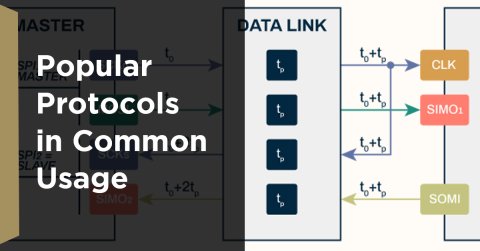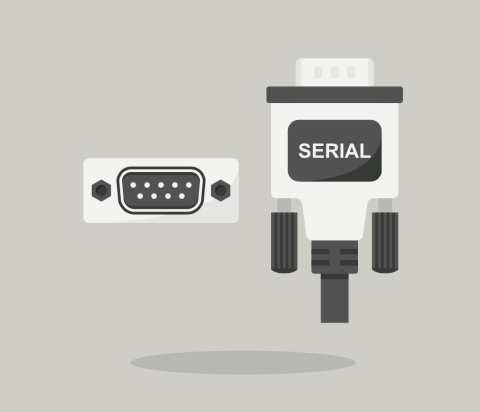Differential Crosstalk and Differential Pair Spacing in PCB Design

Crosstalk is a fundamental aspect of signal integrity, both in single-ended and differential trace. The spacing between signal lines with each routing configuration is defined using typical rules of thumb, which can be easily defined as design rules in your PCB design software. One rule of thumb for defining differential pair spacing between each trace is the “5S” rule, sometimes called the “5W” rule in application notes and other PCB design guidelines.
The 5S rule states that the spacing between two the differential pairs should be 5x the spacing of between the traces in the pair. In the 5W version, the spacing between two differential pairs is S = 5W. When dense routing is required for multiple differential pairs, crosstalk between differential pairs becomes an important consideration, and we need a way to analyze the differential pair spacing between multiple pairs. As it turns out, this is a function of the height of the pairs to the nearest ground plane. Let’s dig into this more deeply and see how we can determine the right spacing between differential pairs to prevent differential crosstalk.
What is Differential Crosstalk?
As its name implies, differential crosstalk is the differential mode analog of single-ended crosstalk, referring to forms of crosstalk between differential pairs, or to the crosstalk generated on a single-ended trace by a differential pair. The two types of crosstalk found between single-ended pairs (NEXT and FEXT) also occur between differential pairs. Strong differential crosstalk can be induced capacitively and inductively, depending on the frequency and geometry of the structure.
The total field seen at some lateral distance away from the pair is the sum of the fields from the two pairs. Because the two ends of a differential pair have some spacing between them, the total field seen at some lateral distance away from the differential pair is not equal to zero. Furthermore, the strength of the electromagnetic field away from the two traces is larger when the two differential pairs have a larger spacing.
This motivates formulating some rule that is used to define the differential pair spacing between two pairs. From the above discussion, and simply by knowing that the field strength decreases as you move away from the pair, one would naturally formulate the following layout requirements for differential pairs:
- The spacing between two differential pairs should be proportional to the spacing between each trace in the pair.
- The spacing between two differential pairs should be in some way proportional to the distance between each pair and its reference plane (if any is present).
Let’s take a look at the following geometry for two differential pairs and determine the differential mode crosstalk between these them. You’re probably thinking that the whole point of differential pairs is noise suppression; while this is true for common mode noise, the difference in field strength between the two traces in the victim pair will produce different levels of noise in each pair, appearing as differential mode noise at the receiver.

Using the differential pair spacing parameters shown above, there are two approaches that can be used to quantify differential crosstalk:
- A model based on field strength
Calculating Differential Crosstalk Strength in a First-Order Model
In the above discussion, there is one other aspect that was not considered: the height of the trace above its reference plane and the exact arrangement of traces in the pair. Similar considerations could be made for stripline differential pairs. Here, we would like to quantify the strength of differential crosstalk as a function of geometry. The approach shown here follows closely the approach shown by Doug Brooks. This is normally done by defining a crosstalk coefficient from a circuit model. The problem with these models is that they fail to account for the field strength at the victim trace as a function of distance between the aggressor and victim.
In the above model, we can define a crosstalk coefficient C as a function of the trace spacing S and the height above the reference plane H. It is convenient to define the crosstalk coefficient as a function of the ratio (S/H). In this case, the single-ended crosstalk coefficient between two traces separated by a distance S with opposite polarity is:

Here, k is a proportionality constant which is related to the signal rise time on the aggressor line, the transfer function of the victim line, and the dielectric constant of substrate. Someone who has taken an electromagnetics class will know that this model is based on the electric field strength around a wire above a conducting plane. As we will see soon, the value of C can be used to define the ratio of common mode to differential crosstalk noise generated on the victim trace for a given ratio (S/H). The differential receiver will eliminate the common mode noise, so we would like to minimize the differential mode noise.
The differential crosstalk is defined by calculating sums and differences in crosstalk coefficients. For the arrangement shown above, the crosstalk between one differential pair and one trace in the victim pair is just the sum of their coefficients. Note that, for any differential pair spacing value, simply take the scale transformation S → S(1+x). The differential crosstalk is just the difference in crosstalk coefficients for the victim traces:

If we plot this as a function of x for various values of (S/H), we find that the spacing between two pairs can be reduced when the traces are closer to a ground plane. The image below shows such a plot for k = 1; increasing k just moves these curves up the y-axis. This is done to satisfy a given requirement on differential crosstalk. For example, suppose you require a differential crosstalk coefficient of 0.002; if the traces are farther from the nearest ground plane, then a larger spacing is required to ensure you meet this design goal.

Also, take a look at what happens when (S/H) = 0.5; the maximum crosstalk coefficient does not always occur when x = 0. Depending on your design goal, you could put traces closer together and see the same level of differential crosstalk as when the traces are farther apart.
You might be wondering: what about trace width? The trace width is important as it determines the single-ended and differential impedance, capacitance, and inductance. For a given differential impedance specification, a change in differential pair spacing and substrate thickness forces a change in the trace width in order to maintain the same odd-mode impedance value.
Finally, you should note that there is an important parameter missing from the above model: the dielectric constant. I've shown in other simulations and videos that the value of the dielectric constant also matters for influencing differential crosstalk, and this is one of the reasons higher speed designs opt for lower Dk values in some layers. To see the effects of Dk value on differential crosstalk, you could try to put the Dk value back into the above crosstalk coefficient model above, or you would need to look at the S-parameters for an interconnect as calculated from an electromagnetic field solver.
Multi-Port S-Parameters For Differential Crosstalk
When you use a field solver to calculate differential crosstalk, you will be using time-domain results (showing pulses input into the victim interconnect) and S-parameters to quantify broadband differential crosstalk. The former is a standard simulation approach that is implemented in Altium for single-ended traces, but not for differential traces. The latter is only capable of being calculated with an electromagnetic field solver.
In the simulation results below, I show a set of S-parameter curves extracted with Simbeor for two commercial laminates (Megtron 7 and Megtron 8) on thin layers. The intra-pair spacing was set equal to the width of the traces in the pair (S = W). The edge-to-edge spacing between the pairs was varied with 1W, 2W, and 3W. The dielectric thickness was also varied between 1.5 mil and 3 mil.
Megtron 7 Results

Megtron 8 Results

The results should be very interesting because they illustrate that simply moving ground closer to the differential pairs and maintaining the same 1W etc. edge spacing between the differential pairs does not automatically reduce crosstalk. This is because maintaining 1W significantly decreases the pair-to-pair spacing. However, going from 1W/3 mil thickness to 2W/1.5 mil thickness still reduces crosstalk and still creates higher density routing. This is exactly what we would want if we were developing an HDI board with a lot of high-speed interfaces coming from the main processor.
We can see this from a simple calculation with the trace width/spacing in the pair and the inter-pair spacing values for the 3 mil and 1.5 mil laminates.
- 3 mil Meg7 @ 1W spacing, S/H = 0.75, and S = 2.249 mil
- Initially Xtalk = 10.84%
- 1.5 mil Meg7 @ 2W spacing, S/H = 0.51, and S = 0.765 mil
- Initially Xtalk = 6.82%
This means the density still increased by 63%, even with the differential pair-to-pair spacing increased to 2W. If we increased the pair-to-pair spacing to 3W, we would still have a large increase in routing density.
There is another very important effect here that I have highlighted in the data above: bandwidth limiting. The bandwidth limiting defined above is seen in the return loss plot for the interconnects; when the return loss hits -10 dB, that is defined as the bandwidth limit for the channel. We can see that in all of the above cases, the bandwidth limiting effect in the channels is reduced by going to a lower Dk value. The reason this works is simple: it forces you to use a wider trace width, which reduces the inductive contribution to the impedance and reduces the reactive part of the transmission line impedance.
Full Mixed-Mode S-parameters For Two Differential Pairs
In some cases, you want to know the level of common-mode noise created in a differential pair due to an input differential signal on the aggressor pair. This can be calculated using mixed-mode S-parameters for our 4-port network listed above. This expands the number of ports in the S-parameter matrix to an 8-port network, although only 4 of these ports are physical inputs and outputs. This type of S-parameter set in differential channels is called mixed-mode S-parameters, and it describes mode conversion in a single differential pair and between two differential pairs.
The full S-parameter matrix for a differential pair is that considers common-mode and differential mode signals is an 8x8 matrix with the form shown below:

This is a lot of terms to calculate in a simulation! Today's field solvers in EDA tools can calculate this by examining signal induced in a victim differential pair by calculating the contributions from each of the single-ended traces in the aggressor differential pair. The matrix above describes both FEXT and NEXT alongside mode conversion (for example, FEXT seen as common-mode when excited by an input differential signal).
The moral of the story is this:
- Differential crosstalk creates differential-mode noise and common-mode noise on the victim pair
- In some cases, common-mode noise minimization might be more important for EMC purposes
- Increasing differential pair spacing in the victim pair is most effective for ensuring crosstalk is differential-mode dominant
- In some cases, differential mode noise minimization might be more important for ISI purposes
- Decreasing differential pair spacing in the victim pair is most effective for ensuring crosstalk is common-mode dominant
You can define any trace spacing requirements you derive as design rules when you work with Altium. This will help you optimize your routing for low common mode and differential crosstalk throughout your board. The stackup manager also allows you to design your layer stack from a range of standard materials, helping to ensure signal integrity and power integrity.











